Shipping Address Flow for Better Checkout Experience
Speed up filling address by maximizing automation on each label in order to increase success rate during checkout process.
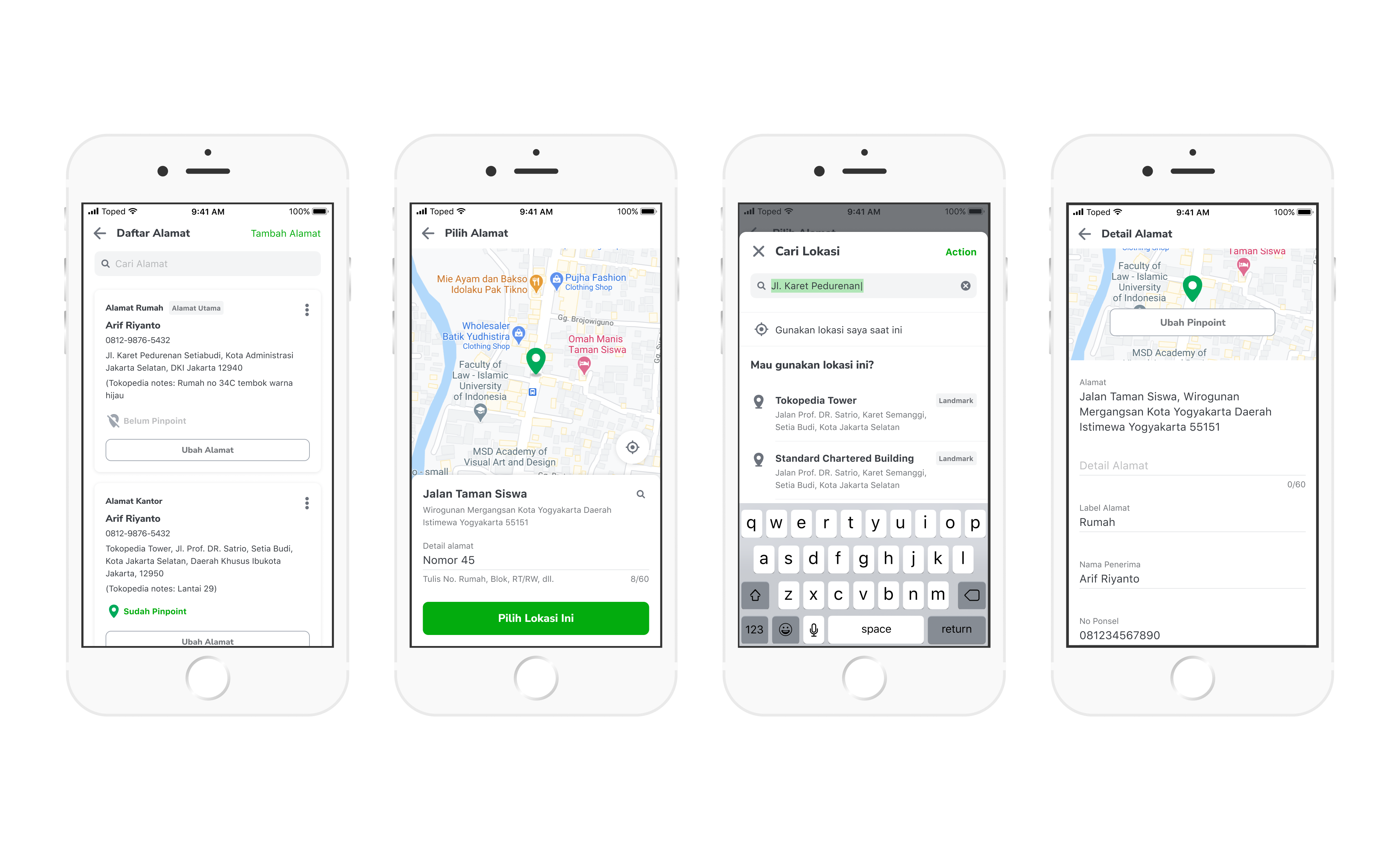
Role
Responsible for research, design, user testing and delivery of key modules and feature areas.
Duration
Q3 2019
Team
1 Product Designer, 1 UX Writer, 2 Front End Developer, 1 Product Manager
Project background
Shipping Address is having an important role in user experience of PG transactions in Tokopedia. It will be needed in order to complete the checkout process.
Address creation flow should be a frictionless experience for users. However, our success rate of address creation is 72% on a monthly average and this number remains stagnant over the year (Jan 2018 - Feb 2019).
This number also says that 1 out of 4 users are unsuccessful creating an address in Tokopedia.
Key issues
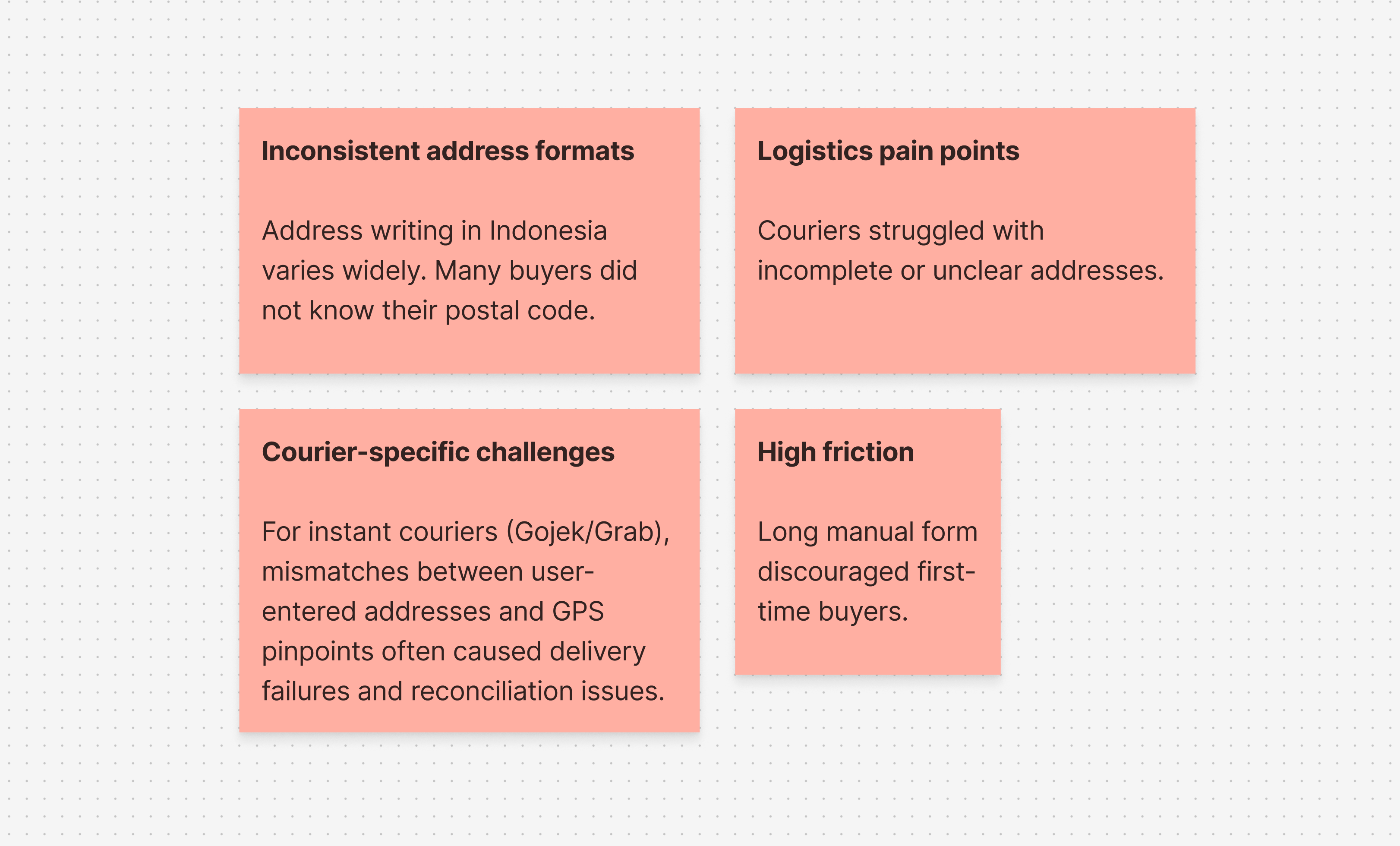
What we already have
At this stage, I worked closely with data science to study user behavior in the later funnel, from Cart to Payment.
By identifying the points where they dropped off, we looked for opportunities to improve.
In addition, we also used a usability testing approach to support assumptions qualitatively.
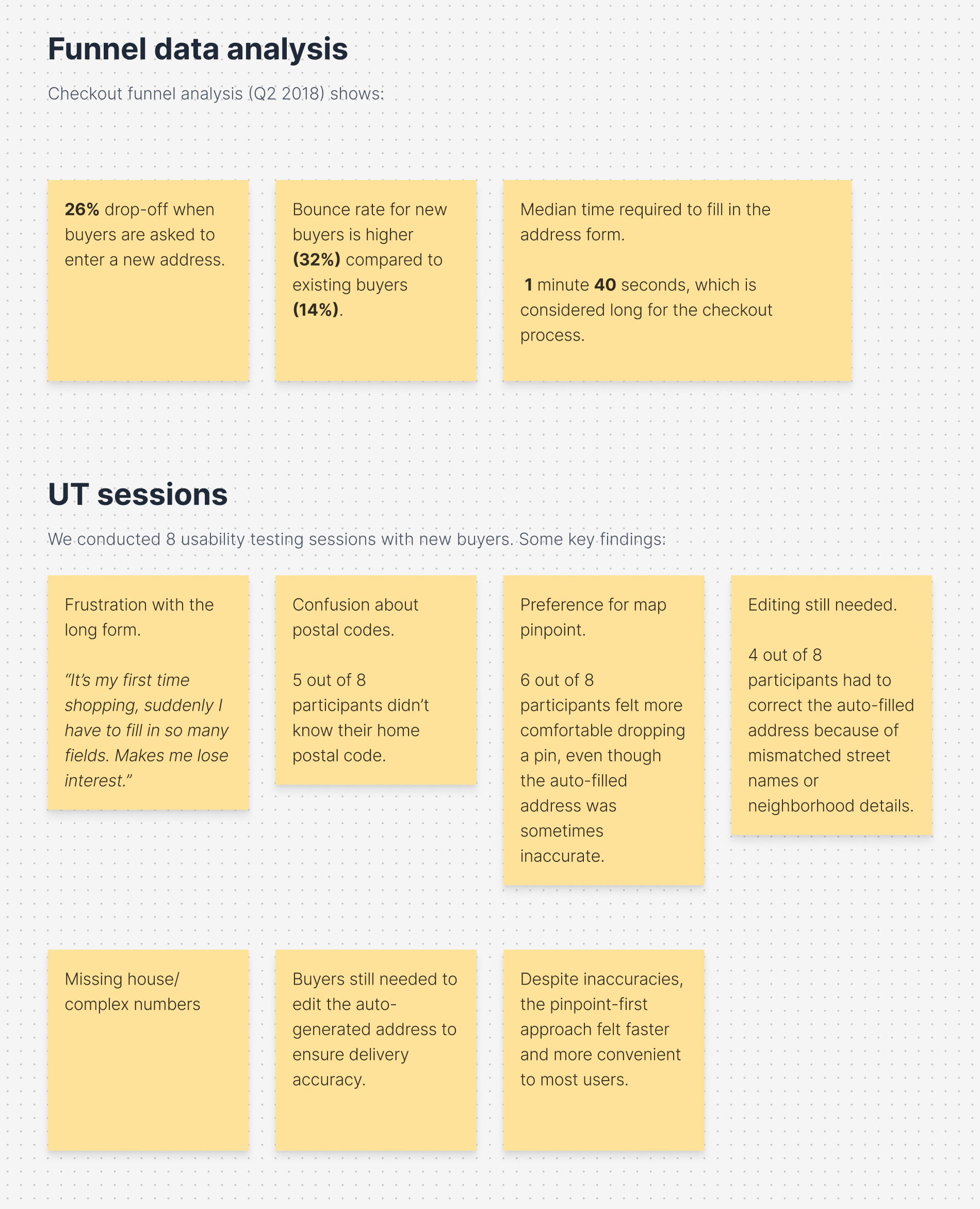
Ideas
We redesigned the address entry to a pinpoint-first, auto-fill assisted flow.
Explorations
I explored a wide range of ideas from rethinking user flows and restructuring layouts, to experimenting with micro-interactions.
The goal was to push boundaries and uncover design directions that could meaningfully enhance the overall user experience.
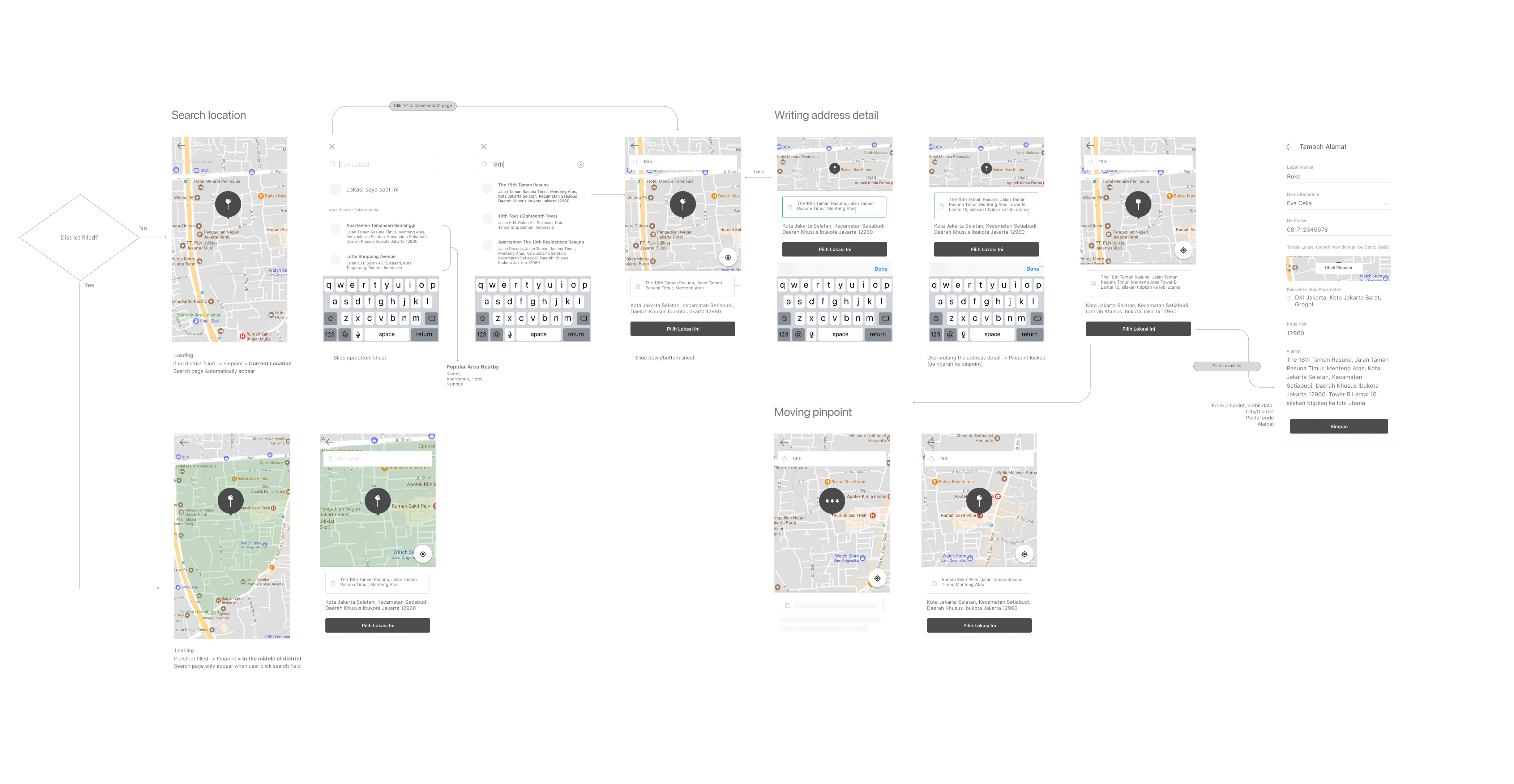
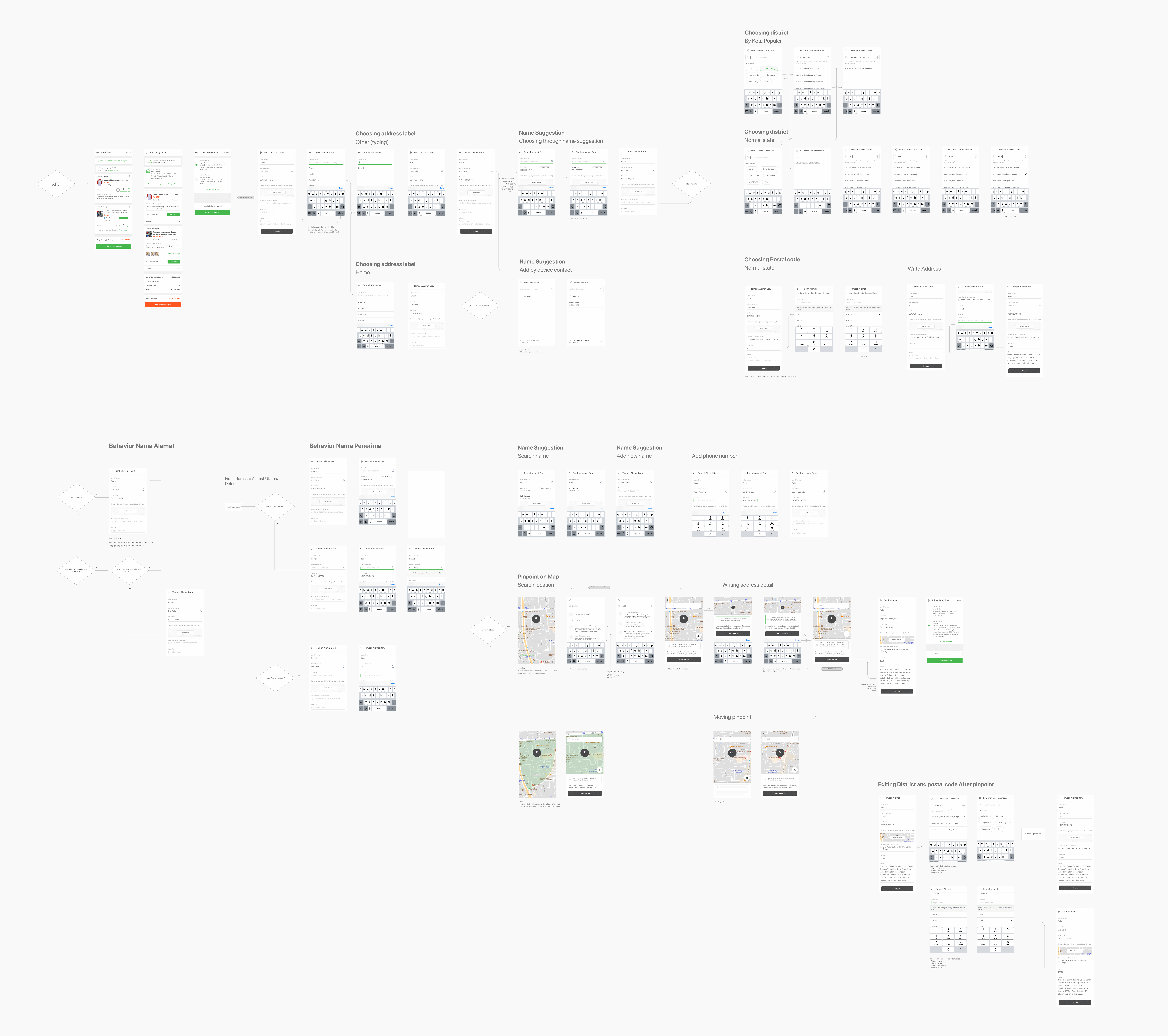
Iterations
We ran multiple rounds of A/B testing and usability studies:
- Tested pinpoint-only flow vs pinpoint + editable fields.
- Refined copywriting and step sequence to reduce drop-offs.
- Manipulated Google Maps data to better fit Indonesian address conventions (e.g., postal code corrections).
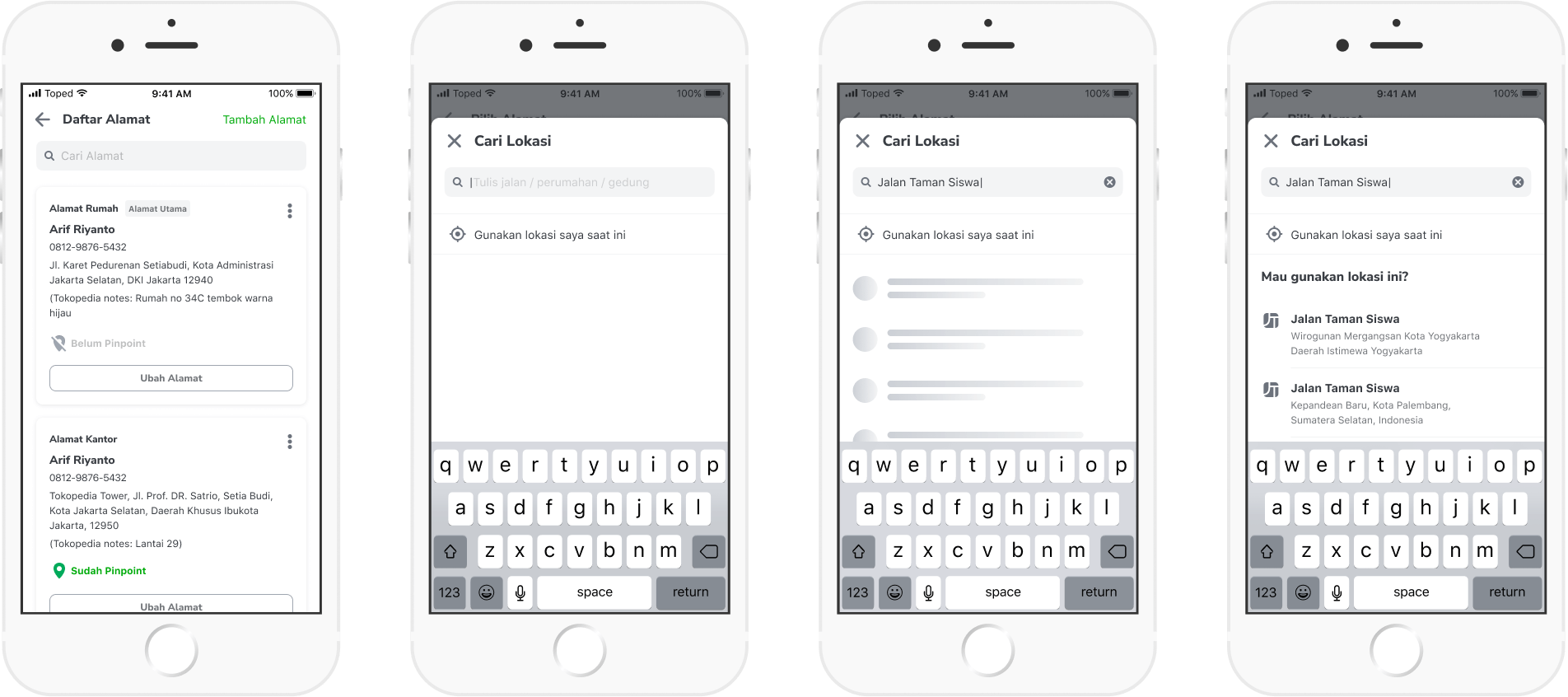
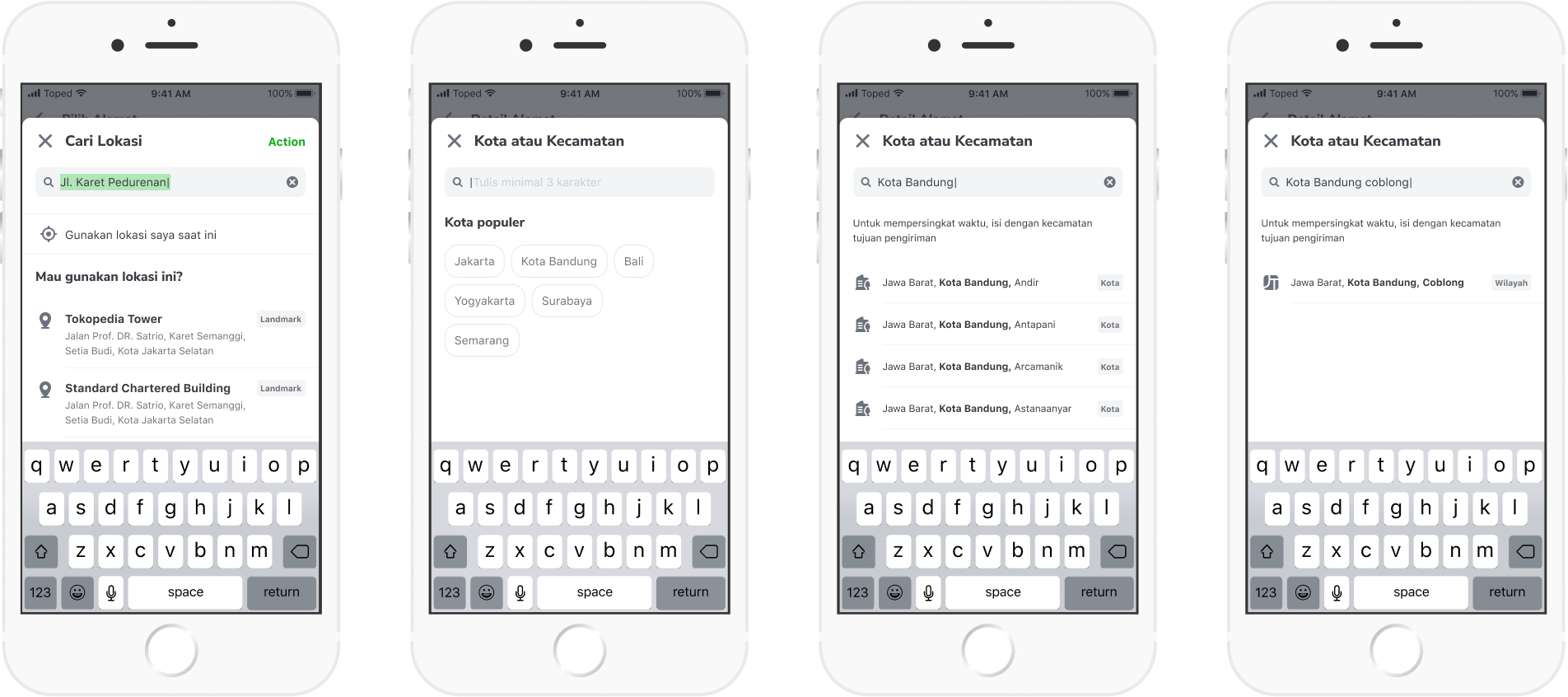
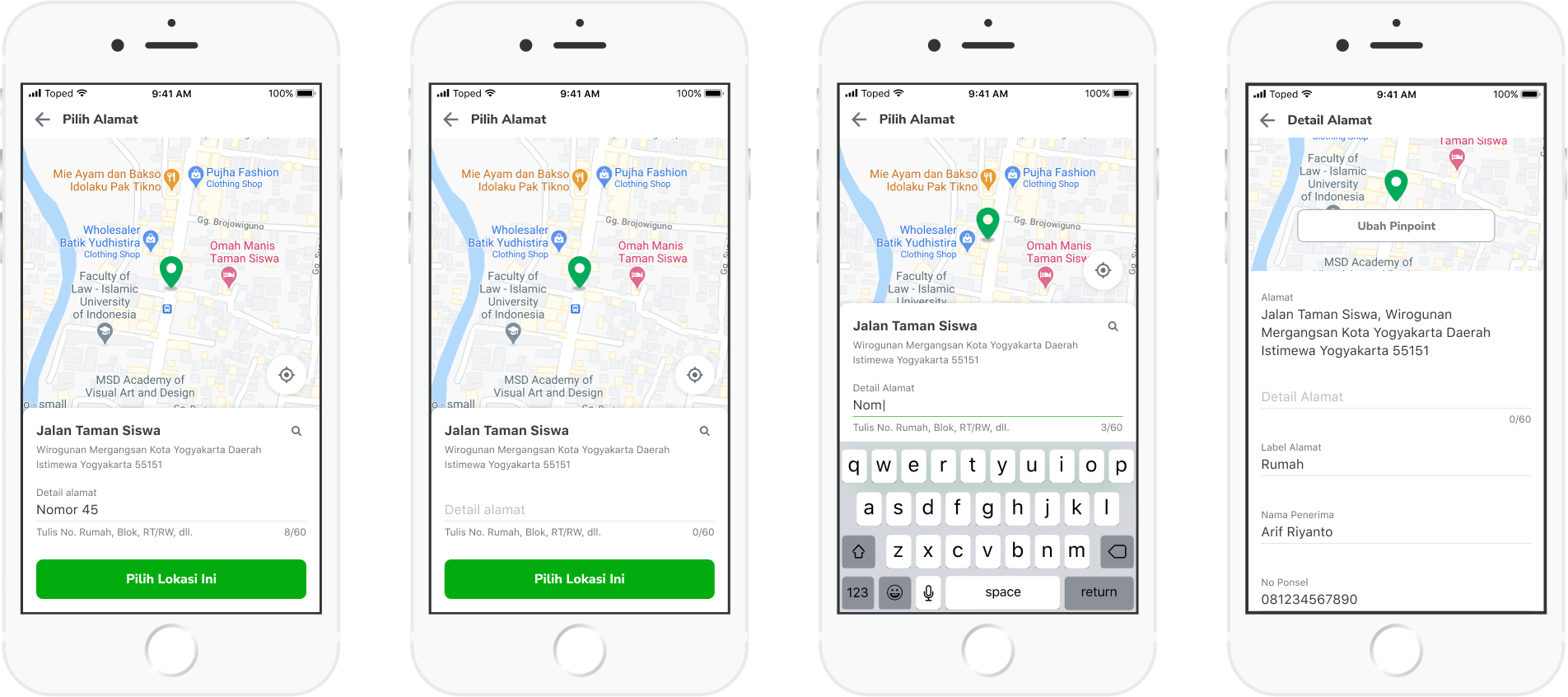
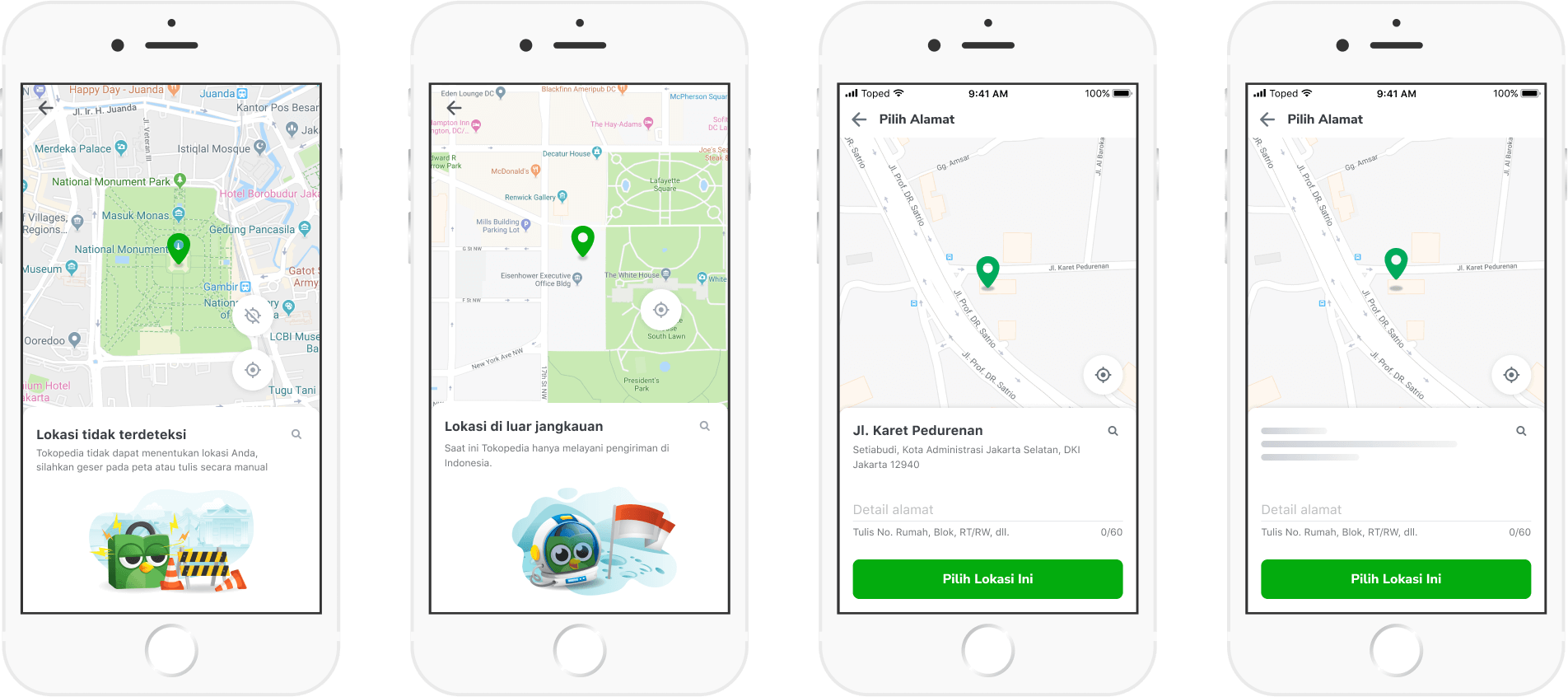
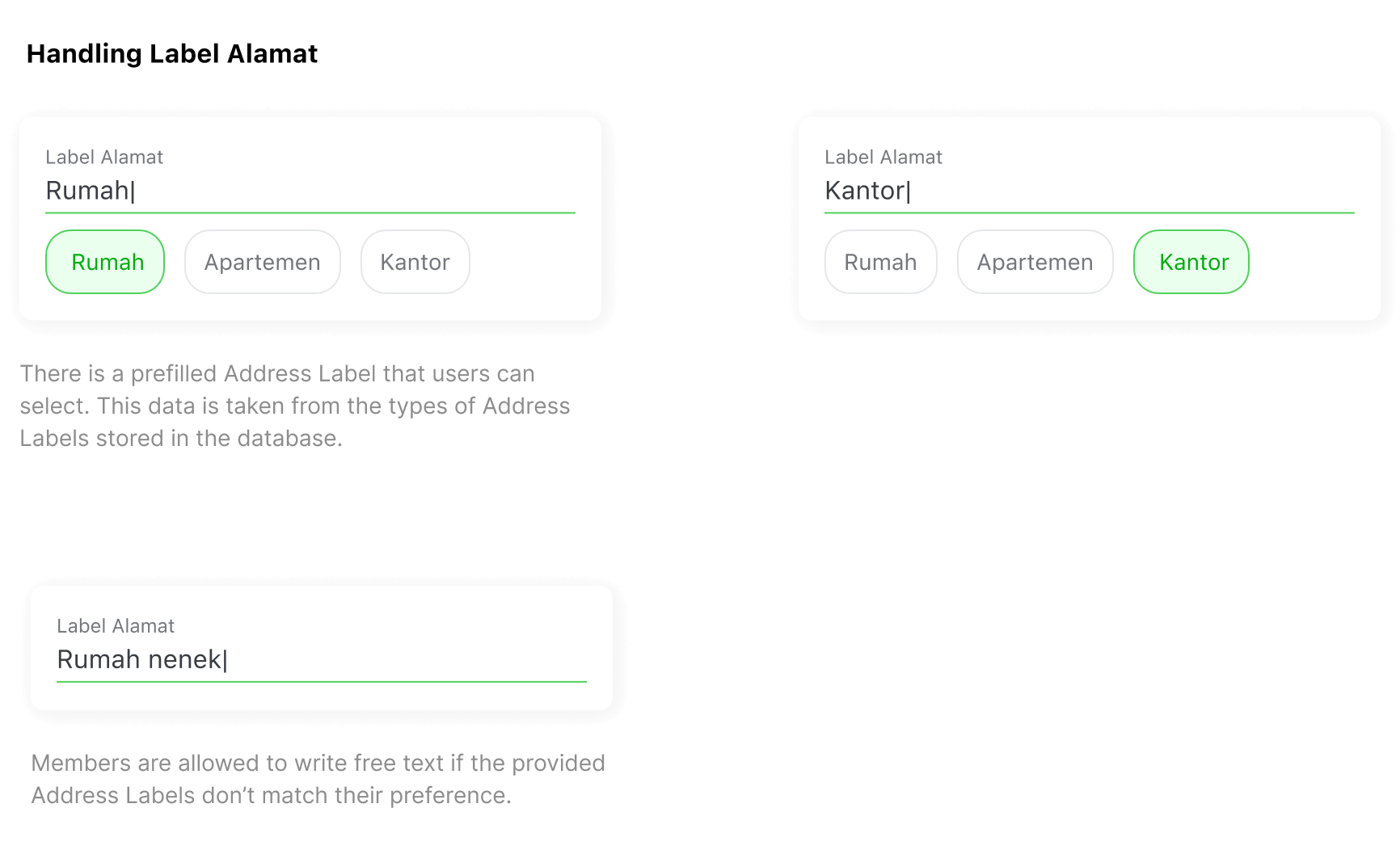
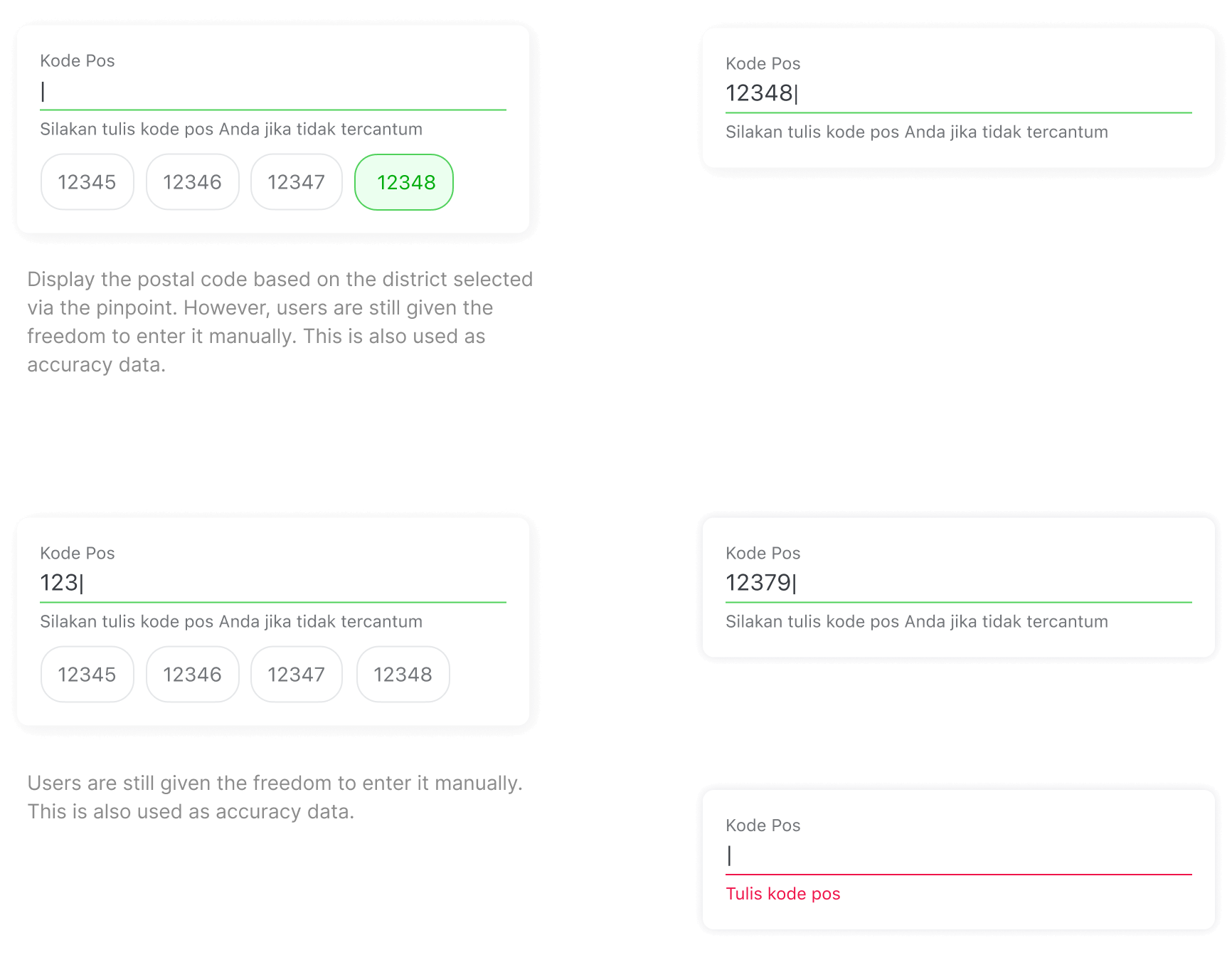
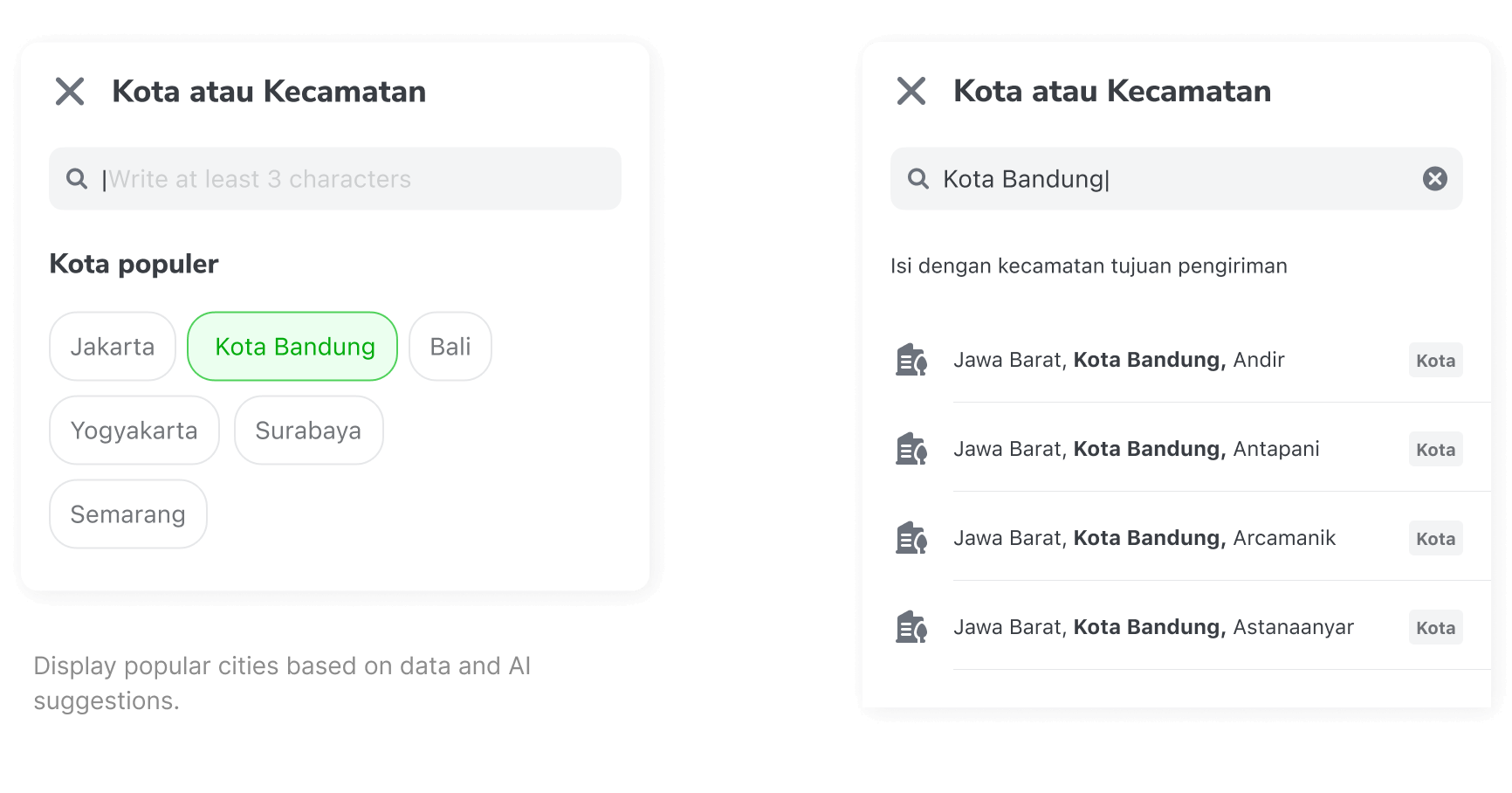
Google Maps data was never 100% reliable.
Balancing low-friction UX with logistical accuracy was a constant trade-off.
Designing an interface flexible enough to handle incomplete or incorrect external data.
Explorations
We ran multiple rounds of A/B testing and usability studies:
- Tested pinpoint-only flow vs pinpoint + editable fields.
- Refined copywriting and step sequence to reduce drop-offs.
- Manipulated Google Maps data to better fit Indonesian address conventions (e.g., postal code corrections).
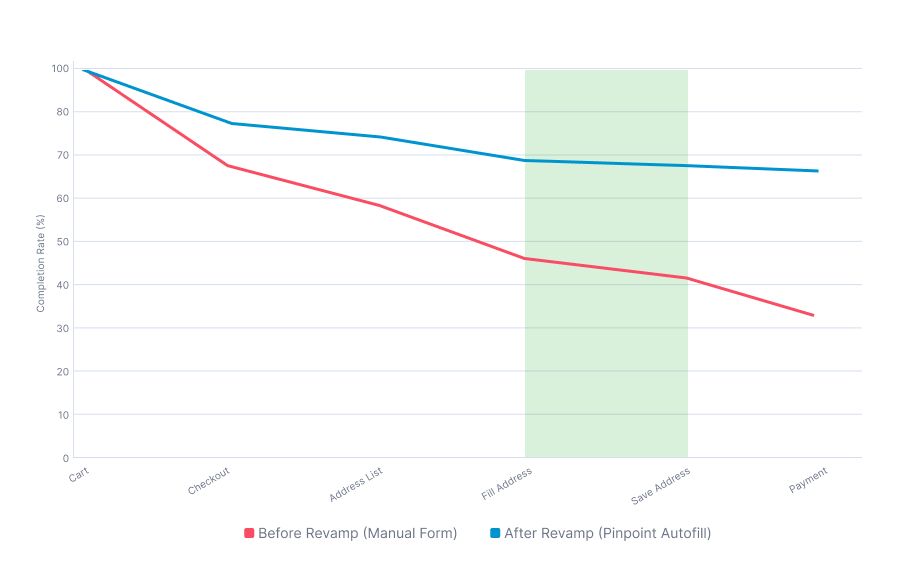
Result & Impact
The redesigned flow delivered significant improvements:
Reduced bounce rate in Checkout for new buyers.
Higher address completion success rate, as users were more likely to save addresses via pinpoint.
Improved courier delivery accuracy, especially for instant couriers using GPS data.
Positive user feedback: buyers felt the process was faster and less confusing.
Key Takeaway & Learning
This project reinforced several key lessons:
Design for local context: Indonesian addresses differ greatly from Western standards, requiring localized solutions.
Bridge UX and operations: Great design must also solve real logistical challenges for couriers and merchants.
Data-informed iteration: A/B tests and UT helped refine the flow, but the product still had to gracefully handle imperfect data.